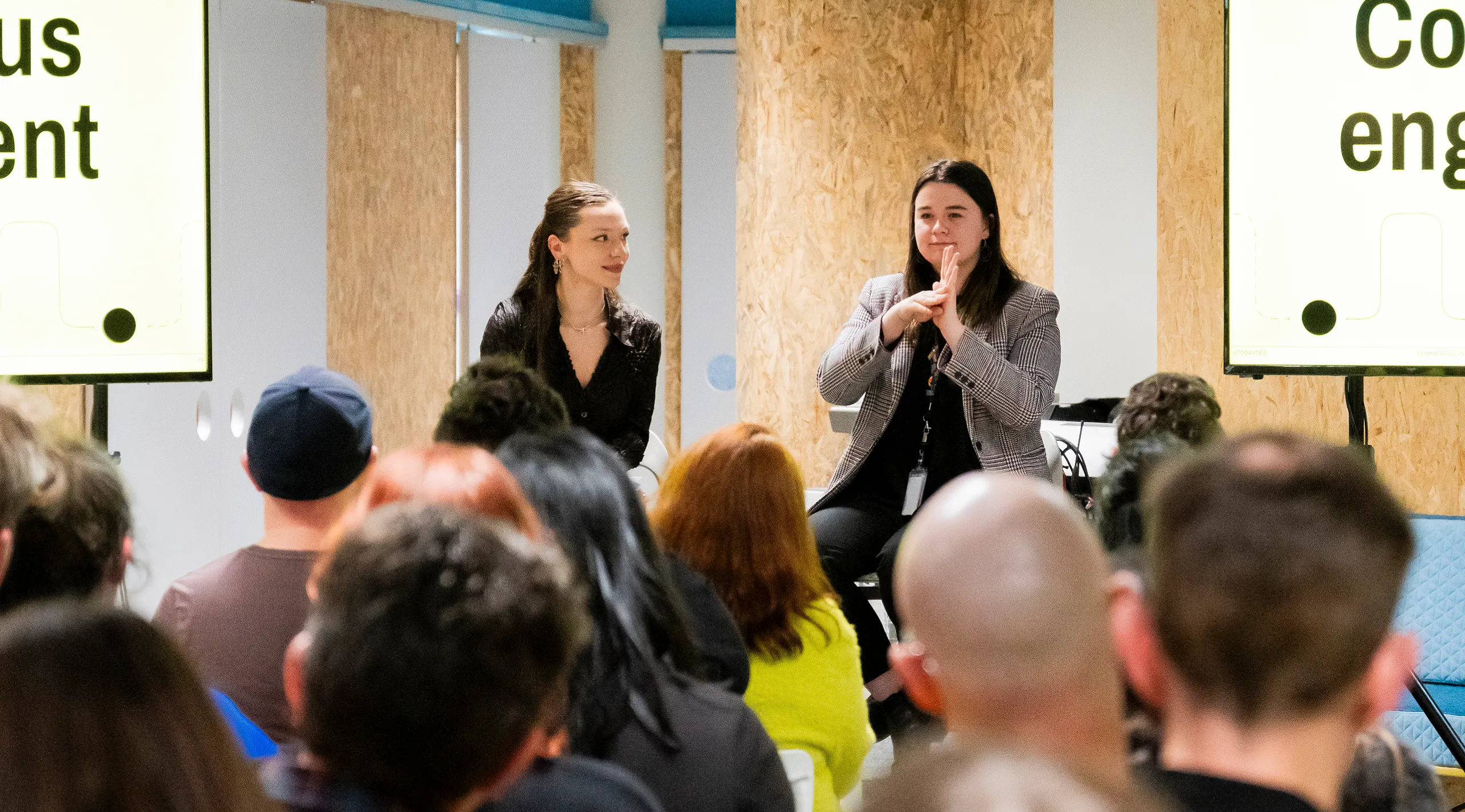Governments worldwide will soon be defined by how—not if—they adopt Artificial Intelligence. But their success won’t be measured by how quickly they deploy it. Instead, it will come down to how responsibly they regulate AI’s development and how thoughtfully they design and implement AI services to genuinely improve people’s lives.
As Minister for the Public Service Katy Gallagher noted in her Annual statement on APS Reform , Australia’s public service must be capable of rising to the challenges and opportunities of AI. “We must make sure that we have a public service… that can harness those opportunities to deliver better services and more responsive policy in a safe, responsible, and proactive way."
When reforming systems or services, AI presents remarkable possibilities and profound responsibilities. Major government reforms in Australia have shown us that success depends on more than technology—it requires robust governance frameworks, clear accountability, and a deep understanding of human impact. As AI is integrated into government processes and public services, we can approach these challenges thoughtfully from the start.
Human-centred AI (HCAI) offers a framework and approach to designing AI systems that are more intuitive, accessible, and responsive to people’s needs while ensuring appropriate human oversight and accountability.

Keeping humans at the heart of AI
AI doesn’t simply appear out of thin air. Real people imagine, design, regulate, build and use these systems. Their human values and intentions are already shaping what AI becomes and how it touches our lives. As Fei-Fei Li—co-founder of Stanford's Institute for Human-Centered AI notes, “AI has the ability to be a force multiplier of our very best—and very worst—intentions.”
This understanding—that people are at the heart of AI—forms the foundation of HCAI. When we take a human-centred approach to AI, we create opportunities to combine the best of humanity with the best of AI: human judgment, creativity, and contextual understanding working alongside AI's ability to process vast amounts of data and identify patterns.
HCAI builds on decades of evidence showing that inclusive design leads to better outcomes. Whether it’s informing policy, streamlining internal processes, or transforming service delivery, the path to successful AI implementation remains the same: design for human needs by actively involving impacted communities, testing ideas early when changes are less costly, and treating AI as a collaborative partner—not a silver bullet. This isn't just good design—it's good governance.
Four considerations for success
1. Build from strong foundations
The Australian government already offers high-quality guidance for governing safe, fair and ethical AI implementation—the key is finding what’s fit for purpose in your context and the challenge at hand. The AI Ethics Principles , Policy for Responsible Use of AI in Government , and Voluntary Safety Standard provide good and clear direction, as do their companion guides ( Implementing Australia’s AI Ethics Principles in government , Introduction to the Voluntary Safety Standard ).
These frameworks help us ask the right questions at every stage, from early exploration to implementation: Would this policy serve people's interests? How do we ensure fairness? How do we protect privacy? How do we maintain transparency? Good governance becomes a natural part of our process when it’s flexible, integrated, and iterative.
2. Keep an exploratory mindset
It's important for public servants to understand AI in a practical sense to make good decisions about how the public sector regulates and uses AI. This practical understanding is essential to ensuring that government applications of AI are human-centred and not extractive.
Experiment with the tools you have on offer. It’s not enough to poke at ChatGPT, get frustrated, and give up. The speed with which technology advances means that the AI you use today is the worst you’ll ever use. To understand its potential, spend at least 10 hours collaborating with AI on tasks that matter to you. That way, you can better assess its capabilities and flaws.
If you’re exploring using AI to transform public services and improve people’s lives, your experimentation shouldn’t be hard and fast. Instead, it should be guided by the principles, safety and ethics guidelines discussed above.
Taking a human-centred approach to AI experimentation means thinking differently, exploring possibilities iteratively, and seizing on the opportunities in a cost-efficient way. This starts with a discovery phase to uncover what kind of AI systems will prove most valuable for the task at hand, right through to testing ideas early, and then iterating them based on the insights that emerge.
3. Design for AI with community
Whether you’re creating public AI policy, strategy or services, designing with community has proven results in government. A collaborative approach creates solutions that work well in the real world, adapting to different needs and circumstances.
When we design with diverse communities rather than just for them, we create solutions that work for all Australians—not just the majority.
As Today founder and CEO Damon O'Sullivan notes, “This is a happy occasion where doing the right thing is also the cheapest, fastest, most effective thing. Including all service users early and getting things right before the expensive implementation phase is far more efficient than trying to retrofit inclusion later.”
4. Embed strong safety and ethics guardrails
Safety and ethics guardrails should be embedded at every stage in every AI project. If you’re putting AI systems into practice, it’s essential to be open with people about how technology supports their experience. This means designing interfaces that clearly show when AI is being used, creating systems that people can understand and trust, and building in safeguards for privacy and fairness from the start.
What good looks like in practice
Around the world, governments are realising the success of AI in serving two critical purposes: augmenting how public servants work internally by automating time-intensive tasks, and creating more responsive and accessible services for citizens.
Take the UK Government’s AI assistant, Humphrey. It can handle routine tasks like summarising meetings, but its real strength lies in amplifying human intelligence. Policymakers can use Humphrey to process thousands of public submissions in hours, using interactive dashboards to uncover patterns in community sentiment—freeing up time for strategic thinking and nuanced decision-making.
Here in Australia, CSIRO is showing the power of inclusive design in healthcare services. Their Dolores chatbot, currently in development by the Australian e-Health Research Centre, helps people manage chronic pain through personalised support and education. Co-designed with healthcare professionals and piloted with patients, Dolores makes chronic pain management more accessible to people with diverse needs—helping people of all ages and across CALD communities.
For many years, demand has been outstripping the delivery capability of our essential services. The productivity gain that AI presents is not an opportunity to do the same, with less; it’s about being able to finally meet the expectations and needs of our service users.
Where to from here?
The pressure to regulate, implement and innovate with AI in an ever-changing landscape is hard to ignore. But so too are the opportunities that will open up if we get it right. Public servants must ensure that AI remains accountable, is developed with comprehensive community engagement, and serves genuine community needs.
By taking a human-centred approach, we can ensure AI’s evolution heads in the right direction—one that creates systems and services that not only improve efficiency, but amplify our innate human capacity to serve our communities.
